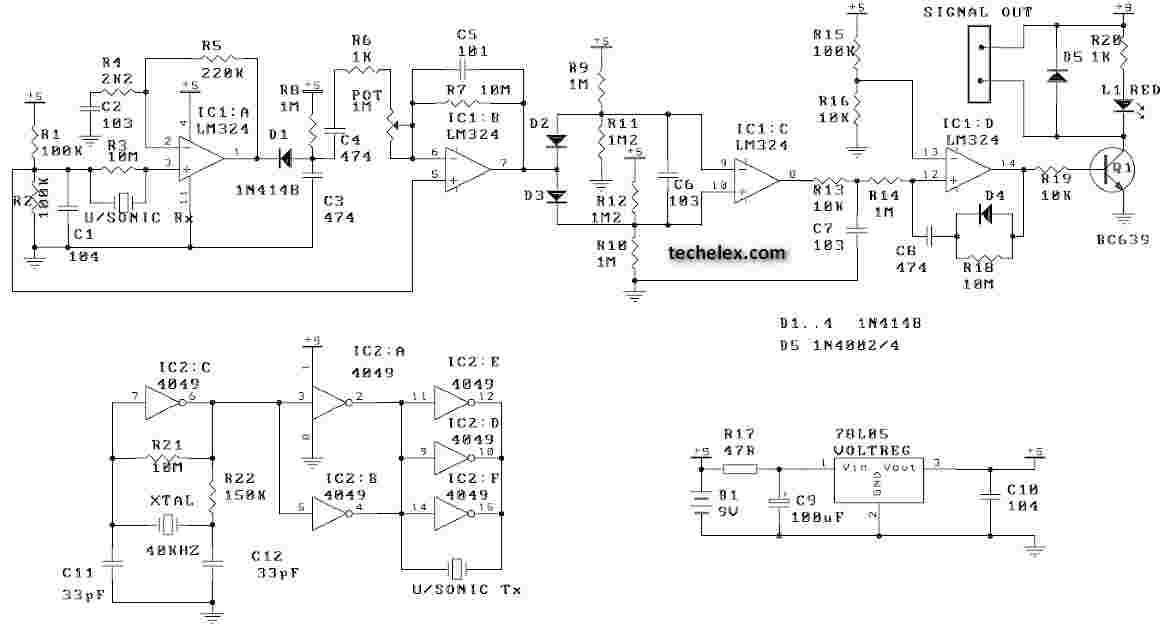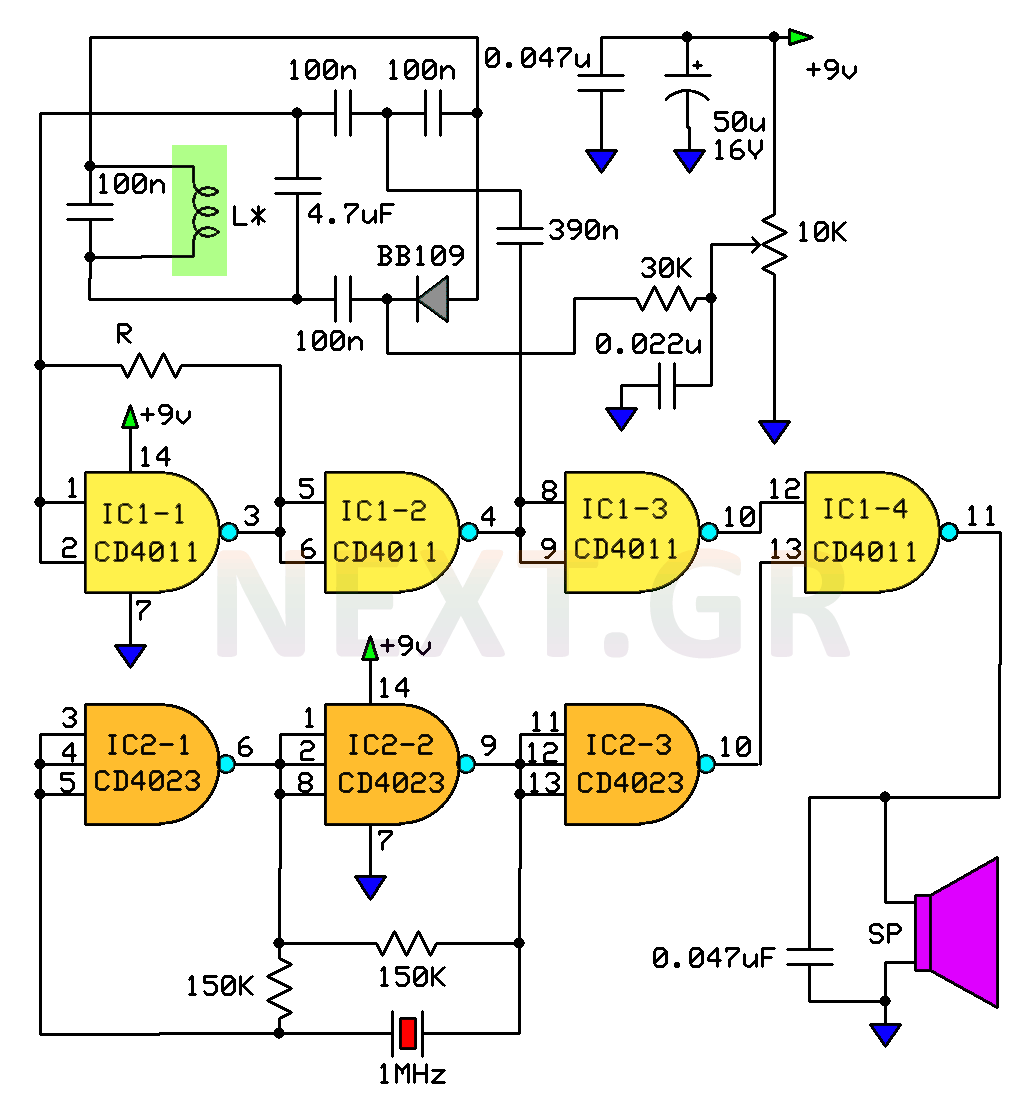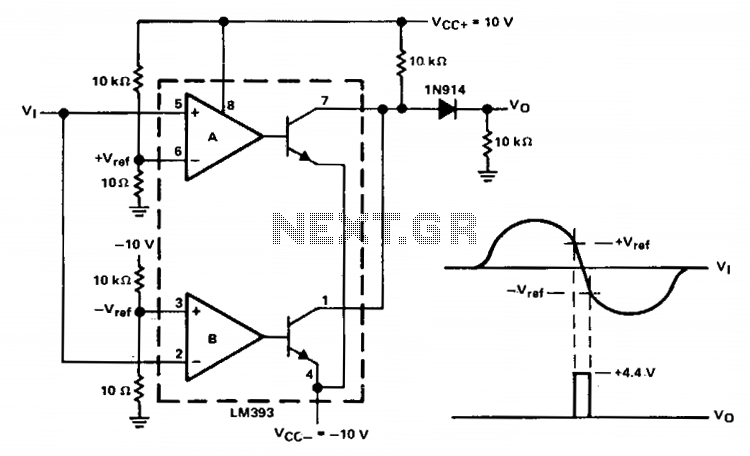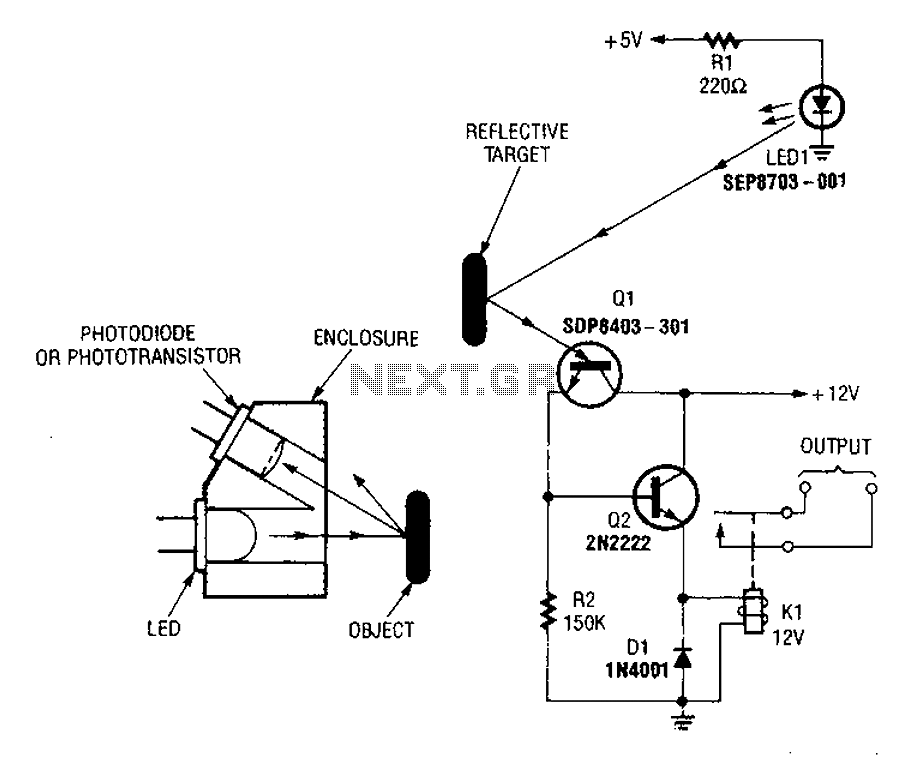
C209A IC For Metal Detector
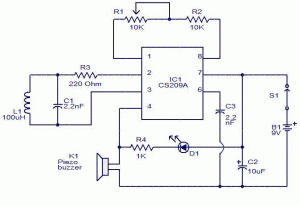
The following circuit illustrates a C209A integrated circuit (IC) designed for a metal detector application. Key features include a 100 µH inductor used as a sensor and an oscillator circuit, where the inductor plays a crucial role in the detection process.
The C209A IC serves as the core component of the metal detector circuit, integrating various functionalities necessary for detecting metallic objects. The circuit typically consists of a power supply section, the C209A IC itself, an oscillator circuit, and a sensor inductor of 100 µH.
The power supply section provides the necessary voltage and current to the circuit, ensuring stable operation of the IC. The C209A IC is responsible for processing the signals from the oscillator, which generates an alternating current (AC) signal that is modulated by the presence of metallic objects.
The 100 µH inductor is strategically placed in the circuit as the sensor element. When a metal object comes near the inductor, it affects the inductance, which in turn alters the frequency of the oscillation produced by the oscillator circuit. This frequency shift is detected by the C209A IC, which then triggers an output signal indicating the presence of metal.
In addition to the basic components, the circuit may include additional elements such as capacitors for filtering, resistors for biasing, and diodes for signal rectification. These components work together to enhance the performance of the metal detector, improving sensitivity and response time.
Overall, the C209A metal detector circuit is a practical application of electronic principles, effectively utilizing inductance changes to detect metallic objects with precision.The following circuit shows a C209A IC for metal detector circuit diagram. Features: 100uH as a sensor, oscillator circuit, Inductor determines .. 🔗 External reference
The C209A IC serves as the core component of the metal detector circuit, integrating various functionalities necessary for detecting metallic objects. The circuit typically consists of a power supply section, the C209A IC itself, an oscillator circuit, and a sensor inductor of 100 µH.
The power supply section provides the necessary voltage and current to the circuit, ensuring stable operation of the IC. The C209A IC is responsible for processing the signals from the oscillator, which generates an alternating current (AC) signal that is modulated by the presence of metallic objects.
The 100 µH inductor is strategically placed in the circuit as the sensor element. When a metal object comes near the inductor, it affects the inductance, which in turn alters the frequency of the oscillation produced by the oscillator circuit. This frequency shift is detected by the C209A IC, which then triggers an output signal indicating the presence of metal.
In addition to the basic components, the circuit may include additional elements such as capacitors for filtering, resistors for biasing, and diodes for signal rectification. These components work together to enhance the performance of the metal detector, improving sensitivity and response time.
Overall, the C209A metal detector circuit is a practical application of electronic principles, effectively utilizing inductance changes to detect metallic objects with precision.The following circuit shows a C209A IC for metal detector circuit diagram. Features: 100uH as a sensor, oscillator circuit, Inductor determines .. 🔗 External reference
